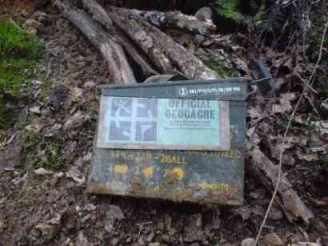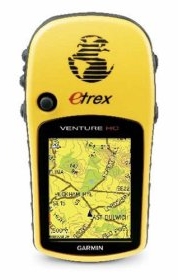
Geocaching is the use of a global positioning system (GPS) to find hidden caches of items. You then take an item and leave an item in the cache.
Skills – Strength: 2, Balance: 2, Flexibility: 1, Agility: 2, Coordination: 1
Time needed: 2 hours, Cost to try: £free is you borrow a GPS, else
Have you ever wanted to go out for a walk in the countryside that actually had some purpose apart from just getting out of the house or walking the dog? If you like treasure hunts and being outdoors, then you’ll love Geocaching.
What is Geocaching?
Geocaching is the use of a global positioning system (GPS) to find a hidden cache of treasure without letting anyone else know where it is hidden. You will need to choose the right GPS for geocaching to give you the best chance of finding the caches. This addictive fun leisure pursuit took off when the Groundspeak team set up Geocaching.com.
A GPS uses signals from satellites orbiting the Earth to calculate your current location. There used to be a deliberate error in the GPS signal that limited accuracy to 100 metres. This error (selective availability) was turned off in 2000, and the resultant positional accuracy (taking into account atmospheric conditions) improved to better than 10 metres. With the improved accuracy of GPS, the commercial and leisure markets made the most of selling handheld GPS units. Now you will see SatNavs in a lot of cars used by drivers who are unable to find their way or read a map.
Seeing the advent of the handheld GPS, Geocaching.com sought to make use of this technology for fun. They came up with the idea of hiding caches around the world and logging the locations on a website. Members could then enter the coordinates provided into their GPS, and let it lead them on an adventure to find the hidden geocache.
What is a Geocache?

Members of Geocaching.com have hidden geocaches all over the world. So what is a geocache? Basically it is a container that is hidden on publicly accessible land where it cannot be seen. No digging is required! Geocaches are often hidden at the base of trees, under fallen trees, or under bridges. They range in size from a microcache the size of a pen, up to a large ammunition box.
Each geocache contains a log book so that visitors can record that they have found it. If the container is big enough, the geocache will also contain some goodies. These can be anything that isn’t perishable. You could find keyrings, toys, or maybe books. The principle is to take something from the geocache and leave something else in its place. Some Geocachers don’t take anything, as they just love the fun of finding it with their GPS.
What do I need to go Geocaching?
If you want to try Geocaching, you will need four things:
- The coordinates for the location of the geocache;
- A handheld GPS;
- A magnetic compass;
- A map of the area where the geocache is hidden.
Firstly, you will need to get a handheld GPS. You can buy a GPS from most leisure and outdoor retailers. Prices start at £50, or $100. If you are new to Geocaching, you could borrow a GPS, or go with someone who has their own handheld GPS.
The next important piece of equipment you will need is a magnetic compass that allows you to read a bearing in degrees. You will need this as you get close to the geocache.
You will also need a map of the area where your chosen geocache is hidden. This is important as you may not be able to walk in a direct line from where you are to the geocache. The map should show where public rights of way are. That way you won’t get told off for being where you shouldn’t.
How do I go Geocaching?
Geocaching.com provides a geocaching starters guide to help you on your way.
This is not quite a duffer’s guide to geocaching, but may help when you are first starting out. You may first want to find out if there are any geocaches in the area you want to explore. Go to geocaching.com and use the search facility to find the list of geocaches nearby. You can also use the very handy map facility. This allows you to wander around the online map and see where the geocaches are. Click on the geocache of interest for details of where it is hidden.
To get the exact coordinates of the geocache location, you need to register for free membership. Log in and make a note of the coordinates. The page gives the location, and details of the size of the cache. There is also an encrypted clue as to where the geocache is hidden, along with a log of everyone who has found it in the past. It is a good idea to print out this page to take with you.
Always take someone with you when you go geocaching. Whilst you are busy looking at the GPS, you don’t want to wander anywhere dangerous!
[amazon_link asins=’B00542NV32′ template=’ActiveOutdoors-ProductAd’ store=’activoutdo-21′ marketplace=’UK’ link_id=’d8850f02-ce4a-11e7-928c-9d83648fc481′]
Off you set with your geocache details printout, a GPS with a waypoint created using the coordinates of the geocache, a map and compass. Use the GPS to guide you towards the geocache, using your map to let you know where you are allowed to walk. Most people find the compass screen the best for finding the right place, whilst others use the map display. You will find which you prefer by trial and error.
Once you get to the last 50 metres, you will need to go slower. If you stop, the GPS will no longer be able to work out which direction you are walking in. It can only tell you where you are and which direction the geocache is from you. This is where the compass comes in handy. Set the compass with the bearing that the GPS indicates, and then follow it for the distance the GPS shows. Depending on the day, the GPS will get you to within 20 metres of the geocache. Sometimes it will be spot on, other days the location will jump about as the signal from the satellites is too patchy (due to trees or not enough satellites in sight). Now you need to use the clue sheet you printed out. You may get a clue like “It is at the base of an oak tree 20 metres from the footpath.” Start looking!
[amazon_link asins=’B010UPWVGU’ template=’ActiveOutdoors-ProductAd’ store=’activoutdo-21′ marketplace=’UK’ link_id=’ea465989-ce4a-11e7-a482-ed82ab8bf06b’]
This is the bit I initially found challenging. Some locations are easy, some are very difficult. If the clue is that it is hidden under the third step, then once you have found the steps it can be pretty obvious where to look. However, I have been to several geocaches where all I know is that it is hidden at the base of a tree. When you are standing in a wood with over thirty trees where it could be hidden it can take a bit of time. Be patient. After finding a few geocaches, you will gain experience of what to look for. Usually they will be covered by a big stick or log.
When looking for a geocache, the idea is to find it without letting anyone else know where it is. Passersby are called Muggles (as in those who are not aware of wizards in Harry Potter). Occasionally a geocache is Muggled. This means that someone who doesn’t realise what it is has removed it. When you find a geocache, always put it back in the same place and make sure that it is covered up again.
Go hiking to find several Geocaches
If you like geocaching, you might like to make a day of it and find an area with several geocaches. You can then hike from one to another, or see how many you can find in a day. Take a picnic. Take your friends with you and have some fun on the way.
Geocaching Travel Bugs
You may find a Geocoin or Travel Bug in a Geocache. A travel bug is a geo-tracked item. This is where someone registered with Geocaching.com has registered a unique number for a travel bug which can then be tracked. Travel bugs are often given tasks that geocachers can help them to complete. This could be something like “get me to a location in every country around the world” or “I want to travel north.” Perhaps the owner of a geocaching travel bug wants it to travel to locations near water. You help by taking the travel bug and moving it to another geocache that fits the travel bug’s task.
GPS in your Mobile Phone
If you really enjoy geocaching, you may want to get a mobile phone that has a GPS receiver in it. You can read all about them in our article on GPS enabled mobile phones. You can then use the inbuilt camera to take photos of your treasure hunting exploits and upload them onto geocaching.com
If you like the sound of geocaching and want to get a GPS that will be much better at guiding you to a geocache than your phone, you can buy your geocaching GPS from Amazon

